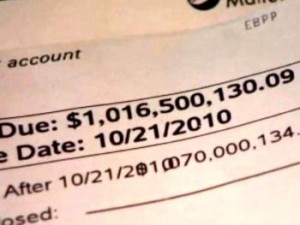The last section on indoor grow lights explained the tiny attributes of the timid looking (but ferocious) T5 fluorescent bulb. The next two bulbs, the Metal Halide and the High Pressure Sodium, are much larger in stature and light output. However, their reputation alone can occasionally send the fledgling indoor gardener into a state of internal panic. Hellish images of five digit power bills dancing around a bonfire of cash frequent the paranoid mind.

The fears have some validity. Still,a good outline of what you want to grow (along with space requirements) and knowing precisely how much light is needed usually quells the nightmares. Also, a good budget graph (i.e Excel) will benefit the financially frightened.
First off, know your bulbs. Metal Halide bulbs and High Pressure Sodium bulbs are classified as High Intensity Discharge. These powerful lights are much brighter than any other lighting on the market. It’s so bright, in fact, that it comes closest to replicating the sun than any other form of bulb. Check out our first post on indoor lighting to know the spectrum difference between the two and when to use them in the plant’s cycle.
Metal Halide and High Pressure Sodium typically range from 150 watts up to 1000 watts. A 150 watt High Pressure Sodium will provide for two heavy feeding fruit bearing plants. A 1000 watt HPS or MH will optimally cover a 6′ by 6′ space (400 watt-3′ by 3′, 600 watt, 4′ by 4′). Anything beyond that will cause plants on the outside boundary to stretch, creating an uneven bounty at harvest time.
Also, figure out how much your electric company charges per hour for wattage in your area. This power cost estimation chart covers about every bulb wattage possible.
Once the grower knows what kind of bulb suits the space, he/she also needs to acquire a ballast, a reflector, and a socket (if it doesn’t come with the reflector already).
The ballast is kind of like the bulb’s advisor by limiting the amount of current that the lamp can draw. This prevents the lamp from getting indulgent with the current and failing. The ballast essentially converts the electricity from the home and morphs it into the specific energy frequency needed to operate the lamp.
Ballasts must be specific to the bulb. A 4oo watt Metal Halide ballast will only work with the same named bulb and so forth. Disaster would unfurl if the unheeded took a 400 watt HPS bulb and hooked it into a 1000 watt HPS ballast.
A reflector is like the bulb’s marketing consultant, able to spread the light’s word further than if it was on its own. It stretches and reflects the bulb’s light around the room, making plants aware of it’s artificial but giving light. Reflectors come in all shapes and sizes, each custom tailored to the grower’s space needs.

Susan M Schlundt says
I have a light used for seasonal affective disorder. Can i use it as a grow light so i can bring my tomato plant indoors before it gets too cold outside?
ashley says
You can grow tomatoes indoors under lights, but whether or not you have success depends on the wattage and lumens of your light. If you leave your tomato plant outside and the temps go below 55 degrees at night, your plant will drop its blossoms, so if your temps are approaching that, you don’t have anything to lose by moving your plant inside and seeing if your light will have enough output.